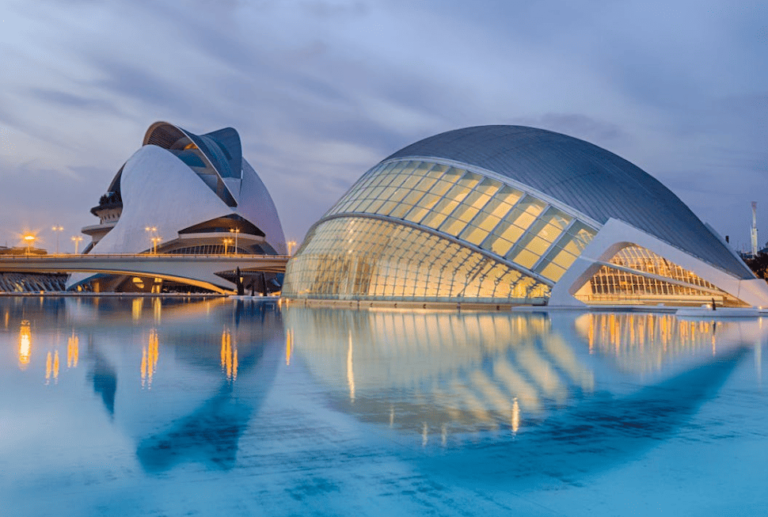Valencia was chosen as European Green Capital 2024, for its ambitious strategy that combines environmental sustainability with the quality of life of citizens. Velenje (Slovenia) and Helsingør (Denmark) were awarded the Green Leaf Award, dedicated to centers with less than 100 thousand inhabitants.
Table of Contents
Valencia is the European Green Capital 2024
The Spanish city prevailed over the other finalist, Cagliari, which hoped to be the first Italian to boast this title. “We now have a commitment to work with other European cities to create a greener Europe,” said Mayor Joan Ribó during the awards ceremony.
The winners of the Green Leaf Award, dedicated to centers with less than 100 thousand inhabitants, are Velenje (Slovenia) and Helsingør (Denmark).
What it means to be the European Green Capital
The first European Green Capital was Stockholm in 2010. This is the second victory for Spain, after that of Vitoria-Gasteiz in 2021. It thus reaches France (with Nantes in 2013 and Grenoble in 2022) and Germany (with Hamburg in 2011 and Essen in 2017). In 2023 the recognition went to the Estonian capital Tallinn.
The title of European Green Capital is awarded by a jury of experts from the European Commission on the basis of twelve parameters. Namely, air quality, noise pollution, waste, water, nature and biodiversity, sustainable land use, green growth and eco-innovation, climate change mitigation, climate change adaptation, sustainable urban mobility, energy and governance.
In addition to the prestige and visibility that comes from this recognition, Valencia will receive a prize of 600 thousand euros. Resources that it will have to invest to put its sustainability strategy into practice and to mobilize citizens – and all other stakeholders – in this process.
Why Valencia’s environmental projects have been rewarded
To celebrate this important achievement, the facades of the town hall, the Puerta del Mar, the Veles e Vents building and other famous buildings and monuments were illuminated in green.
In addition to committing itself to achieving carbon neutrality over this decade, the administration has developed an Urban Strategy for 2030 which combines environmental and social aspects, working towards the provision of affordable housing, inclusion, the protection of diversity and the quality of life of citizens. A challenge that is not so simple, for an urban area that is the third largest in Spain and has two thousand years of history behind it.
The initiatives of Valencia towards a green transition
In recent years various areas of the historic center have been pedestrianised. Starting from the Plaça de l’Ajuntament, the town hall square. Until 2015 the share dedicated to private vehicles was 57 percent, today it is only 18 percent.
Other priorities include the installation of photovoltaic pergolas that generate electricity on a small scale and the renewal of the public lighting system. The latter will lead to annual savings of 4 million euros, which will in turn be reinvested in energy efficiency.
Various initiatives, started in the form of pilot projects, could be extended to other areas of the city if successful. GrowGreen, for example, plans to create rainwater storage systems and vertical gardens on facades and terraces to reduce the thermal stress of buildings.
WaysTup, on the other hand, recovers waste from the meat, fish and coffee capsule industries to obtain fertilizers or useful materials for the chemical, pharmaceutical and energy production industries.
The first city to measure tourism-related emissions
Valencia is also the first city in the world to measure CO2 emissions generated directly from tourism. In 2019, therefore before the travel restrictions linked to Covid-19, there were just under 2.2 million travelers (1.2 foreigners and 920 thousand Spaniards) and first-time overnight stays exceeded 5 million, with a growth of 5.7 percent over the previous year.
That year, tourism emissions reached 1.3 million tons of CO2. 81 percent of which came from the means of transport with which tourists reached the city. The percentage due to travel within the city itself is minimal, only 1 percent.
But it can be further reduced by converting the entire public transport system to electric, or by planting new trees capable of absorbing greenhouse gases. Overall, the carbon footprint of tourism is equal to a third of that generated by the food consumption of city residents. The promise of the Valencian administration is to become a carbon neutral destination by 2025.
Read also: 10 sustainable travel destinations for eco-friendly adventures












